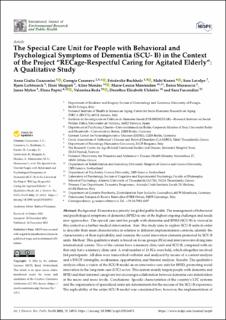| dc.contributor.author | Guazzarini, Anna Giulia | |
| dc.contributor.author | Casanova, Georgia | |
| dc.contributor.author | Buchholz, Friederike | |
| dc.contributor.author | Kozori, Mahi | |
| dc.contributor.author | Lavolpe, Sara | |
| dc.contributor.author | Lichtwarck, Bjørn | |
| dc.contributor.author | Margioti, Eleni | |
| dc.contributor.author | Mendes, Aline | |
| dc.contributor.author | Montandon, Marie-Louise | |
| dc.contributor.author | Murasecco, Ilenia | |
| dc.contributor.author | Myhre, Janne | |
| dc.contributor.author | Poptsi, Elena | |
| dc.contributor.author | Reda, Valentina | |
| dc.contributor.author | Ulshöfer, Dorothea Elisabeth | |
| dc.contributor.author | Fascendini, Sara | |
| dc.date.accessioned | 2024-03-01T12:49:04Z | |
| dc.date.available | 2024-03-01T12:49:04Z | |
| dc.date.created | 2022-12-21T11:23:48Z | |
| dc.date.issued | 2022 | |
| dc.identifier.citation | International Journal of Environmental Research and Public Health (IJERPH). 2022, 19 . | en_US |
| dc.identifier.issn | 1661-7827 | |
| dc.identifier.uri | https://hdl.handle.net/11250/3120676 | |
| dc.description.abstract | Background: Dementia is a priority for global public health. The management of behavioral and psychological symptoms of dementia (BPSD) is one of the highest ongoing challenges and needs new approaches. The special care unit for people with dementia and BPSD (SCU-B) is viewed in this context as a further medical intervention. Aim: this study aims to explore SCU-B units in order to describe their main characteristics in relation to different implementation contexts, identify the characteristics of their replicability, and examine the social innovation elements promoted by SCU-B units. Method: This qualitative study is based on focus groups (FGs) and interviews involving nine international centers. Five of the centers have a memory clinic unit and SCU-B, compared with six that only have a memory clinic unit. A total number of 18 FGs were held, which altogether involved 164 participants. All data were transcribed verbatim and analyzed by means of a content analysis and a SWOT (strengths, weaknesses, opportunities, and threats) analysis. Results: The qualitative analysis offers a vision of the SCU-B model as an innovative care unit for BPSD, promoting social innovation in the long-term care (LTC) sector. This system mainly targets people with dementia and BPSD and their informal caregivers but encourages collaboration between dementia care stakeholders at the micro and meso levels. Conclusions: Specific characteristics of the country’s LTC systems and the organization of specialized units are determinants for the success of the SCU-B experience. The replicability of the entire SCU-B model was considered low; however, the implementation of single elements composing the SCU-B model may foster innovation. This study provides relevant suggestions on how to implement the SCU-B unit and innovative solutions for dementia care. Keywords: dementia; BPSD; special care unit; psychosocial intervention; qualitative study; social innovation; implementation; replicability; RECage project | en_US |
| dc.description.sponsorship | This article forms part of the RECage (respectful caring for the agitated elderly) project founded by the European Commission in the Horizon 2020 research and innovation program framework under grant agreement No 779237. | en_US |
| dc.language.iso | eng | en_US |
| dc.publisher | MDPI | en_US |
| dc.relation.uri | https:// doi.org/10.3390/ijerph192416913 | |
| dc.rights | Navngivelse 4.0 Internasjonal | * |
| dc.rights.uri | http://creativecommons.org/licenses/by/4.0/deed.no | * |
| dc.subject | BPSD | en_US |
| dc.subject | RECage project | en_US |
| dc.subject | dementia | en_US |
| dc.subject | implementation | en_US |
| dc.subject | psychosocial intervention | en_US |
| dc.subject | qualitative study | en_US |
| dc.subject | replicability | en_US |
| dc.subject | social innovation | en_US |
| dc.subject | special care unit | en_US |
| dc.title | The Special Care Unit for People with Behavioral and Psychological Symptoms of Dementia (SCU- B) in the Context of the Project “RECage-Respectful Caring for Agitated Elderly”: A Qualitative Study | en_US |
| dc.title.alternative | The Special Care Unit for People with Behavioral and Psychological Symptoms of Dementia (SCU- B) in the Context of the Project “RECage-Respectful Caring for Agitated Elderly”: A Qualitative Study | en_US |
| dc.type | Peer reviewed | en_US |
| dc.type | Journal article | en_US |
| dc.description.version | publishedVersion | en_US |
| dc.rights.holder | © 2022 by the authors. Licensee MDPI, Basel, Switzerland. This article is an open access article distributed under the terms and conditions of the Creative Commons Attribution (CC BY) license (https://creativecommons.org/licenses/by/4.0/). | en_US |
| dc.source.pagenumber | 17 | en_US |
| dc.source.volume | 19 | en_US |
| dc.source.journal | International Journal of Environmental Research and Public Health (IJERPH) | en_US |
| dc.source.issue | 24 | en_US |
| dc.identifier.doi | 10.3390/ijerph192416913 | |
| dc.identifier.cristin | 2096227 | |
| dc.relation.project | EC/H2020/779237 | en_US |
| dc.source.articlenumber | 16913 | en_US |
| cristin.ispublished | true | |
| cristin.fulltext | original | |
| cristin.qualitycode | 1 | |

